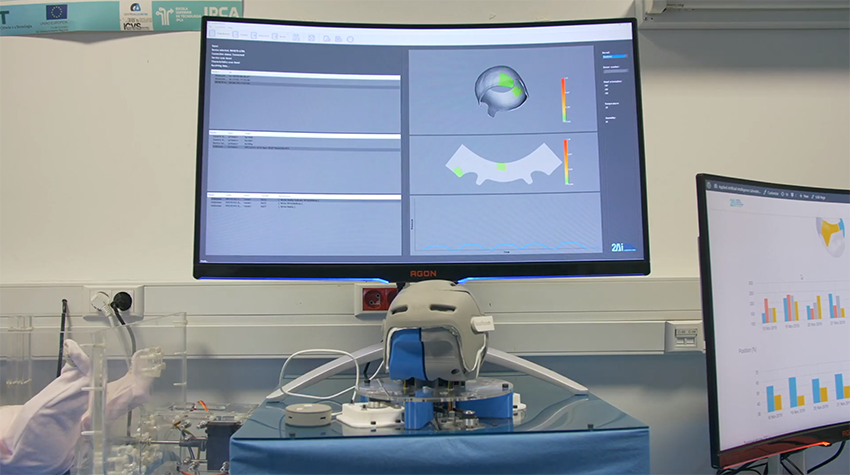Nine researchers from three Portuguese research institutes developed a personalised cranial orthosis to correct deformational plagiocephaly, so-called flat head syndrome, in children. By automatically assessing and adjusting to the form and deformities of a child’s skull, the SmartOrthosis helmet provides support only where it is needed, without causing discomfort or complications.
SmartOrthosis: Self-adjusting helmet corrects cranial deformities in children
- 19 February 2021
SmartOrthosis promises to bring a new way of continuously monitoring, treating, analysing and evaluating cranial deformities by combining medical personalisation with intelligent algorithms.
The helmet responds more effectively to the effects deformational plagiocephaly, while limiting the risk of potential complications that normal orthoses could cause.
Deformational plagiocephaly is characterised by asymmetrical distortions of a child’s skull and affects one in seven infants. It develops when babies lack space in the uterus or consistently sleep in the same position, causing their heads to flatten or develop deformities.
To provide the support and pressure required to correct these kinds of distortions, the SmartOrthosis helmet automatically assesses cranial deformities and adjusts to the shape of an infant’s head.
Adjusting to the specific needs of every child
Orthotic or helmet therapies rely on standard models, which are not properly fitted to an individual skull. Inaccurate adjustments to an infant’s head often lead to complications, such as hair loss, discomfort and soft tissue injuries.
To avoid this the project team set out to develop a system that automatically assesses the anthropometric measurements of a child’s head and makes the necessary adjustments. The research team used a laser to scan a high-resolution 3D model of a deformed head. Measurements of this scan were compared against a set of head models without deformational plagiocephaly, to make asymmetries and deformities stand out.
The helmet consists of several independent modules that can be adjusted during treatment. The inside of the helmet is coated with a smart textile that contains sensors to monitor pressure on the infant’s head. This monitoring system is equipped with a wireless communication module that automatically sends alerts when high pressure regions are detected, to avoid unnecessary discomfort for the infants.
The new orthosis model was tested on 3D-printed head models of infants with deformational plagiocephaly. Tests showed that both the automatic adjustment and the pressure measuring system worked as expected. The level of correction and support the helmet provided exceeded those of other orthoses.
Promoting project results
The project was carried out by the Laboratory of Applied Artificial Intelligence of the Polytechnic Institute of Ave and Cávado in Barcelos, the Superior Institute of Engineering of Porto, and the Centre for Nanotechnology and Technical, Functional and Intelligent Materials, in Vila Nova de Famalicão.
In the process of developing the SmartOrthosis helmet, four computational applications that support orthosis design, construction and monitoring were developed, providing an established foundation for future research.
The results of the project were published in two international scientific journals, with two more under review. The smart helmet was presented at international scientific and medical conferences. Because of the project’s success and established research method, more projects in the same field are expected to follow.
Total investment and EU funding
Total investment for the project “SmartORTHOSIS” is EUR 142 785, with the EU’s European Regional Development Fund contributing EUR 121 367 through the “NORTE 2020” Operational Programme for the 2014-2020 programming period. The investment falls under the priority “Research, development and innovation”.

